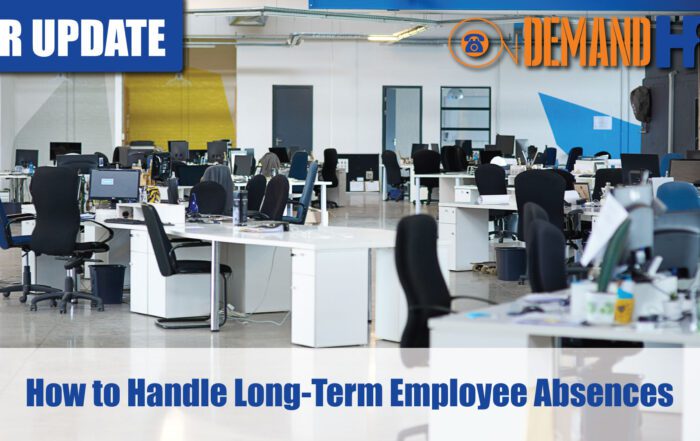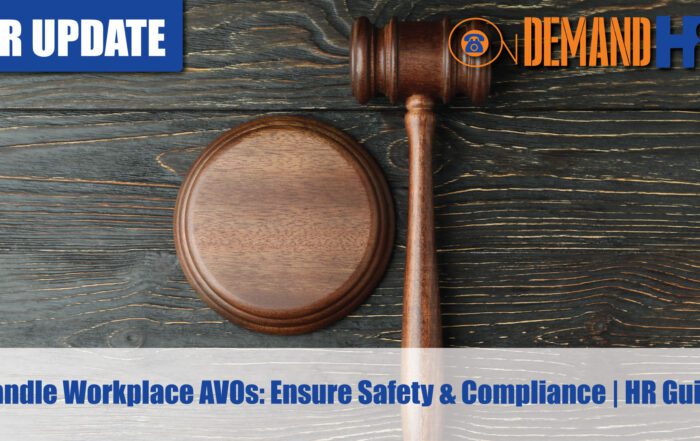Redundancy Pay & Notice Periods
If your business is going through a restructure what redundancy pay & notice periods are your employees entitled to?
Please see below for a full transcript of the video.
Share the HR or workplace relations challenge facing your business and one of our experienced consultants will be in touch within 24 hours with a strategic action plan or discover the best strategy yourself by accessing out free online training library.
Transcript
0:01
Rredundancy pay and the notice periods. So this comes at from the National Employment Standards. So you’ve got here the redundancy pay scale, which talks about how much redundancy pay is applicable, depending upon the length of service. I won’t go through the whole scale, but you can see it there visually, in front of you, section 119 of the Fair Work Act outlines these redundancy entitlements, it goes up and up and up and up and up until it hits nine to 10 years, and then it goes down to 10, at 10 years to 12 weeks. That’s not a misprint. That’s not a typo. The reason that that was implemented or I’m I’m under my understanding is that the reason that that was implemented was because at 10 years, basically, all employees generally in all states will become entitled to long service leave. And therefore, that was the basis upon why it was reduced after nine years to that 10 years plus scale.
My view is that logic is slightly flawed, because most employees at nine years get pro rata long service leave anyway, because the state legislation allows it in circumstances where they’re being terminated for any reason other than serious misconduct. But anyway, that’s just a bit of the logic as to why the scale is what it is. And obviously, for 10 years, plus, you will get less than you’re actually better off being made redundant after nine and a half years, then you are being made redundant after 10 years, if you’re following the NES scale.
Now, look, you may have an employment contract, or you might have an enterprise agreement, which has a scale which is higher than this particular scale in Section 119. So it’s whatever is you know, whatever is the greater obviously, so if you’ve either got your own employment contract, redundancy requirement, or you’ve got potentially a company policy that deals with these things, or you’ve got essentially the the National Employment Standards, which is the minimum redundancy, entitlements.
It’s important to note that redundancy pay typically only applies to businesses with 15 or more employees, there is some businesses, it still applies to with less than 15 employees. But that largely depends upon what modern award governs the employment of the person who was being made redundant. So again, if you’re not sure about your requirements, in this regard, we recommend that you seek advice.
In addition to the redundancy pay, there is also a required notice. So that requirement is separate from redundancy pay, and this this is relating to the period of notice leading up to either the final date of employment, or the period of notice that you will inevitably pay in lieu so you’ve got a decision to make in a redundancy situation, do I want to allow this employee to work through the notice period? Or do I want to simply on the final day that the final decision is made, simply call it there and then and pay the notice period in lieu and as an employee, you’ve got the right to do either.
It’s not up to the employee to decide which one of those they want, it’s up to the employer to determine Well, okay, do I want them to work the notice period or not. And that may that that can vary from from organization to organization, it can be a good little way of saving some money rather than paying an extra four weeks or five weeks, in the event that someone’s got that over 45 situation, then you may wish to make them work the notice period to save a little bit of money. If you feel like there’s just absolutely no work for them to do and it’s pointless for them being there, or you feel like there’s some risk of them being there, then you might pay the notice period in lieu and what I’d say is probably the majority of redundancies, we conduct are situations where the employer would pay in lieu but there is also situations where they work the notice period. So it really depends on the enterprise and the set of circumstances that are before them. So that is a bit about redundancy pay and notice period.
We have put together this what we call a limited time restructure package for anyone who’s looking at undertaking a restructure. And that is and that would offer the following services as part of the restructure package that we will provide you with the restructuring and redundancy plan. We provide you with advice on the payments and related obligations. We give you the initial meeting plan the initial consultation letter, we would give you advice about the alternative jobs and selection criteria if it’s applicable, we give you advice on the further consultation discussions, the final meeting plan, the final meeting and the discussions and letters around those things. We can organize for you outplacement EAP. And we can give you a discount for the Fair Work Commission proceedings should you need us to represent you should any matters go before the commission for any for any clients with 1-3 redundancies or one three employees in that restructure costs $1500 plus GST It’s a limited time offer that we’re offering only for the purposes of this because we come to the end of job keeper. We don’t normally offer this as a one off service. We do have it included in all of our support packages for clients which are essential support performance and risk and HR managers for any clients who are interested in ongoing support arrangements. They are included at free of charge as part of those support packages. So if anyone’s interested in those things, please get in touch with this. At ondemandhr.com.au and we can talk you through either a limited time restructuring service or assisting you on an ongoing basis with this being at no extra cost for you as part of a monthly support.






